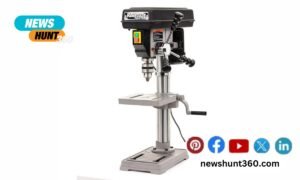Have you been hearing and reading about ‘Servitization’? Have you been wondering how it developed as the latest trend and what role did the field service management landscape play? This article is an attempt to answer all those questions. Keep reading
Contents
What is the concept of servitization?
Servitization involves a significant shift away from the traditional sell-break-fix business model. The new paradigm necessitates offering services rather than goods.
Manufacturers sell equipment and have after-market service at one end of the servitization continuum.
The maker, on the other hand, installs equipment at the customer’s place and bills depending on use. For e.g., instead of charging for the machinery, a compressor maker charges for the cubic feet of compressed air used.
Servitization in action
Servitization has progressed significantly in recent years, including some useful benchmarks and functional templates to emulate.
Rolls-Royce, a well-known luxury car manufacturer, pioneered servitization by selling its engines in a service mode as early as 1962. Customers will pay for Rolls-“TotalCare” Royce’s aero-engine package depending on the number of flight hours. Rolls-Royce remotely controls engines, doing preventative maintenance and replacing defective components.
The Amsterdam-Schiphol Airport is illuminated by Philips’ “Light-as-a-Service.” Philips installs the lighting at the airport and maintains product ownership, while ENGIE (a French electric utility company) acts as a strategic partner for light maintenance.
The Schiphol company is responsible for the facilities used. The airport’s energy usage was cut in half thanks to this servitization model. It further alleviates the airport’s upfront expenses and infrastructure issues.
Low-profit margins, intensified competition, and increased customer demand fueled by the technology revolution have all contributed to a significant change in demand and vendor reaction in the field service management industry.
Wide tech providers have hit a sweet spot as field service companies search for more creative ways to improve operating performance and reduce operational costs, resulting in a flurry of field service management provider acquisitions. From standards to features to approach, much of this transition has resulted in a paradigm shift in field service management. The following patterns have arisen in order to accept change as product-based companies move toward servitization and conventional field service organizations look to evolve and expand as well.
1.Moving on from best-of-breed to a modern path to end-to-end
Service companies were looking to simplify their operations ten years ago. Schedules were produced on whiteboards or Excel more often than not, paper job orders were distributed, and contact between the field and back-office was limited, if not non-existent in some situations. Best-of-breed technology delivered much-needed automation, enabling organizations to maximize productivity and lower costs. It’s no longer a matter of whether anything can be automated or not.
It’s all about details these days. Organizations are also capable of collecting data to drive crucial strategic decisions at the highest level, thanks to advancements in technology. An end-to-end intelligent service solution delivers the seamless data flow required to optimally drive and grow a business while delighting consumers, where an automated solution offered process enhancement. A company will provide real-time access to all data transfers and use it to inform future plans and decisions through end-to-end field service management.
2.Product and service course focused on customer reviews.
Consumers now, more than ever, know exactly what they want. Because of social media and general communication, the universe has been smaller. Customers have more platforms than ever to vent if things go wrong, but consumer experiences are more critical than ever. In this current fickle market awash with competition, engaging with your client base is crucial.
Engineer a prototype, purchase raw materials, assemble the finished product, market and distribute it to consumers, and provide after-sale service in the conventional build and sell model. Moving away from product-based revenues and into offering a “product support approach” is the new trend. Whereas in the standard paradigm, outputs are used to calculate product success, results, and product performance can be used to determine the price paid for a service, resulting in a shift from a transactional to a relationship-based consumer base. A field service agency has the right technologies to help with this transition and to add value to consumers even after they’ve been purchased.
3.Optimization can be reinvented
Servitization isn’t exactly a company practice. It can be a revenue-generating tactic, but the distribution element of operation should not be ignored. Great service can only be judged on how well you deliver, which means optimizing the whole service supply chain, from human resources to components and logistics.
It also involves real-time assessment and tracking of operation execution so that you can switch to a ‘management by exception model’ instead of delivering reactive service to customers. Optimization is no longer exclusive to day-to-day plans or product management. To maintain deliverability, it must now be presented in a more systematic way.
Finally, the most effective field service companies have a good view of the end consumer’s needs for today and tomorrow in order to ensure that they will be fulfilled or surpassed today and in the future. A value-added service is no longer an option; it is the service of the future.
Bottom lines:
When the field service management industry’s goals shift, the requirements for choosing a tech system to work with must shift as well. This reflects the mission to collaborate with the customers to provide agile, nimble solutions that allow them to predict what’s next in an ever-changing environment. This represents the company’s mission to work with customers to develop agile, nimble technologies that allow them to anticipate what will happen next in an ever-changing world.




